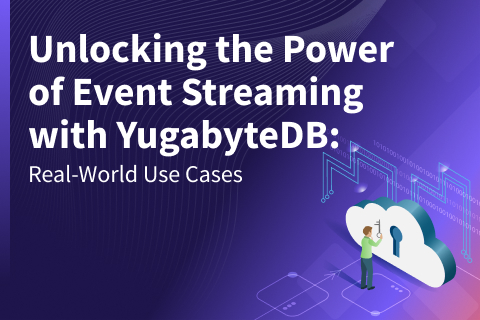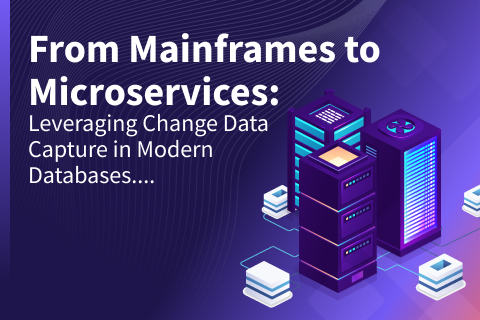The Evolving Strategies in Streaming. The Future of Free Trials.
Subscription streaming services, also known as subscription video-on-demand (SVOD) services, have long utilized free trials to attract new subscribers. The approach is straightforward: users sign up for a free trial for a limited time, get hooked on popular content like “Yellowstone,” “Ted Lasso,” and “Succession,” (or even classics like “Suits!”), and then pay to continue their subscription beyond the trial end date.
But are free trials getting sidelined as a marketing tactic, much like cheap buffets in Vegas, static billboards, and paper coupons? This question, posed by several writers and bloggers, has gained traction as leading SVOD platforms (namely Netflix and Disney+) discontinued their use.
However, the more pertinent question might be: How can we enhance free trials and the systems around them to make them more effective at attracting new subscribers?
The Role of Content in Free Trials for Streaming Services
 Free trials operate off of a simple premise: grow the subscriber base by offering free access to exclusive content for a limited time. The risk is that viewers take advantage of the free trial, but don’t convert into paying subscribers.
Free trials operate off of a simple premise: grow the subscriber base by offering free access to exclusive content for a limited time. The risk is that viewers take advantage of the free trial, but don’t convert into paying subscribers.
However, the potential reward is substantial: converting them into long-term, loyal, paying customers. And conversion relies heavily on drawing new (and long-term) viewers in with unique, compelling content.
This approach is very similar to how SaaS companies leverage free trials to entice people to sign up for their software packages. The difference is that streaming platforms are betting on the quality and appeal of their content (and not a period of limited access) to drive conversions.
Do Free Trials Work in the Streaming Industry?
Free trials are a great way to get customers to try a service (or in the streamers’ case, their content). And they work. According to recent studies and surveys, a large portion of people who try out an SVOD service become paying subscribers.
Depending on the survey or study, anywhere from 58% to 78% of people who try out a free trial, convert to paying subscribers. Less than 6% of subscribers are categorized as serial offenders (i.e. people who cancel four or more services during the free trial period in a 12-month period of time).
Additional research states that the mindsets around free trials might be more nuanced than they seem on the surface. For instance, research highlighted in Harvard Business Review focused on the effectiveness of free trials for “experience” goods. These are products or services, such as streaming platforms, SaaS services, or even vacation packages, where value is determined only after consumption. The research suggested that free trial campaigns are most effective when targeted at those people who’ve had some exposure to the product/service and are not limited to a small subset of features or functions. In other words, exposure to the entire content library and all advanced features is important to ensure conversions. Why? Because, without full access, people don’t know what they are missing out on, and it’s impossible to determine the value of something that has not been experienced.
Another notable finding from the same report highlights the power of social sharing. When an offer includes a feature enabling the targeted audience to share with their peers, the redemption rate surged by over 50%. This increase is likely attributed to the positive reinforcement people experience when they share something.
Streamers Are Changing How They Offer Free Trials
Despite these findings, the fact remains that (in terms of hard numbers) a not-insignificant proportion of people do access an SVOD platform’s content library without eventually converting into paying subscribers. This has led several streaming platforms to modify the relationship between content and free trials in two major ways.
- Introduction of ‘batch” and staggered releases. To maximize audience engagement and manage production costs, many streaming services are moving away from releasing entire seasons at once, a model popularized by Netflix’s “House of Cards.” Instead, they extend the “hook” of their content by releasing new episodes on a weekly basis, either as single episodes or in small batches of two to three. This approach helps to extend the visibility of a new series, keeping audiences intrigued beyond any free trial period and encouraging them to convert to paying subscribers.
- Leveraging live content across all owned platforms. Streaming platforms are increasingly recognizing the value of “appointment viewing” content (also known as “appointment TV”). This includes live events that serve as social catalysts or are considered unmissable, such as the Grammys, Oscars, the Olympics Opening Ceremony, World Cup, Super Bowl, or even a royal wedding. These events draw large audiences who log in collectively to be part of the moment, offering a prime opportunity to attract and retain long-term subscribers. However, successfully leveraging these live events hinges on having the right infrastructure in place.
The Synergy Between Systems and Live Content for Free Trial Conversions
 People often reserve their free trials for significant appointment-style (aka live) events and then activate the trial just before it starts. This ensures they will not miss out on the moment and can explore the rest of the content for the remainder of the trial period.
People often reserve their free trials for significant appointment-style (aka live) events and then activate the trial just before it starts. This ensures they will not miss out on the moment and can explore the rest of the content for the remainder of the trial period.
This means that tens of thousands of viewers (or more if provided the opportunity to share the offer) sign up for their free trial seconds before the live event begins. That level of traffic can overwhelm your authentication and authorization systems and shut you down. This is not a hypothetical situation. It can happen (and has happened), with the impact extending way beyond the initial system crash.
- You lose the ability to convert trial users to paying subscribers
- Existing paying subscribers are unable to access your content
- All viewer types leave your platform and look for other ways to access the same content
But, what if you could future-proof your system, ensuring it remains up and running no matter how much traffic comes at it?
The Best Database for the Streaming Services Industry
A major SVOD provider future-proofed their data layer with YugabyteDB, transforming their complex, relational user metadata profile lookup system to help with peak periods in the moments before a significant live event.
This lookup system operates as the system of record for all their user information, including profiles, preferences, and any other piece of data needed for authentication and entitlements. This is the system that free trial users (and subscribers alike) access to begin viewing content, switch viewing devices, or pick up where they left off. So, it had to be reliable, resilient, and available. Any issues with the system would affect the entire streaming platform since user profiles would not be accessible for authentication or entitlements.
The original MySQL deployment, performed sluggishly for some geographies, struggled to scale, and was not resilient, requiring manual effort from the company’s ops team.
- Slow performance. MySQL was initially deployed only in the US Central region on Google Cloud, covering multiple availability zones but lacking regional fault tolerance. Because the streamer experienced significant growth (due to its viral, high-performing content) and had a geographically distributed customer base, centralizing in one region resulted in increased latency and a diminished user experience. A more distributed solution was needed to improve service quality.
- Scalability issues. The MySQL deployment utilized a primary and follower architecture. The (single) primary node handled reads and writes, while the (nine) followers only served reads. Because all writes were handled by a single node, it was scaled vertically (up) to 64 cores. This meant that in the event of a primary node failure, each of the nine potential replacement nodes would also need to be scaled up to 64 cores. This made the solution costly, inefficient, and unavailable in some Google Cloud regions.
- Manual effort required. The MySQL deployment was not resilient. So, when the primary node failed, a manual failover to a follower node was necessary. Manually promoting a follower to master required human intervention (often at inconvenient times, say 3:00 AM) to restore functionality.
The streaming service successfully transitioned this tier zero/one system away from MySQL to YugabyteDB, which operates on virtual machines in a multi-region solution on Google Cloud. They now have the high availability, low latencies, and scalability they need— especially during high-traffic, appointment viewing-type events—to ensure viewers can log in/sign up and join in.
Since adopting YugabyteDB for their entitlement system of record, there has been no downtime.
Additional Resources and Information
YugabyteDB is an ideal fit for streaming data processes, thanks to its distributed, high-performance architecture. This aligns extremely well with the intensive demands of streaming data systems, including tier zero and tier one systems which need to remain resilient, available, scale, and perform. The Yugabyte database is well-equipped to efficiently handle these requirements.
 Learn how companies like General Motors, Plume, and Xignite are leveraging YugabyteDB for real-time event streaming, making swift decisions, and driving revenue growth.
Learn how companies like General Motors, Plume, and Xignite are leveraging YugabyteDB for real-time event streaming, making swift decisions, and driving revenue growth.To learn more about the different deployment options (fully managed, self-managed, and co-managed), visit our product comparison page. You can also read how YugabyteDB helped other companies transform their systems, in the following blogs:


